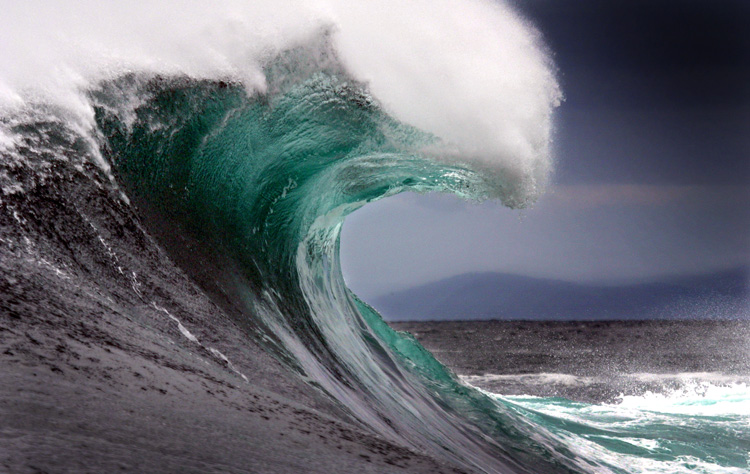Seventy-one percent of Earth's surface is covered with water. The five oceans of the world rule the planet.
Oceans are responsible for the existence of life in our world. Life started in the ocean; today, more than 230,000 marine species call the sea their home.
Oceans control the Earth's climate and temperature. They balance heat and are crucial for the creation of rainfall.
On average, the five oceans of the world have a salinity of roughly 3.5 percent. However, regions like the Mediterranean, the Atlantic, and the Bay of Bengal have higher salinity levels.
The largest ocean in the world - the Pacific Ocean - is ten times bigger than the smallest one - the Arctic Ocean.
The Pacific Ocean got its name from Fernão de Magalhães, the Portuguese explorer who organized the first circumnavigation of the Earth.
In 1521, Magalhães - often called Magellan - called it "Mar Pacifico."
The Pacific Ocean covers more than 30 percent of our planet's surface and is bigger than the landmass of all continents.
Interestingly, the smallest ocean in the world - the Arctic Ocean - has 25 percent of the planet's undiscovered petroleum resources.
But do you know the name and the size of the world's oceans?
1. The Pacific Ocean | 168,723,000 square kilometers
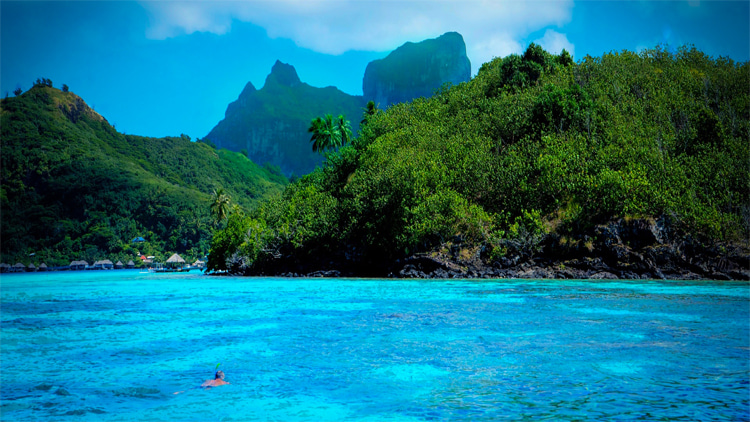
The Pacific Ocean represents 45 percent of the global ocean coverage. It is also the largest body of water and the single biggest feature on planet Earth.
The widest point in an east-west direction is 19,300 kilometers extending almost halfway around the world - 15,500 kilometers from north to south.
The Pacific is the deepest ocean, with an average depth of 4,200 meters, plunging to the unmatched depth of 10,920 meters in the Mariana Trench.
In the winter, the northern half of the North Pacific is raked by high winds of over 55 kilometers per hour, usually blowing from the west.
These winds can generate sustained seas of over five meters to pound North America and Hawaii's western shores.
The tropical band of the western North Pacific is under the influence of the Asian Monsoon.
Strong E trades extend to the Equator in January and generate seas of up to 10 feet (three meters).
Generally, light winds are experienced in the eastern Equatorial Pacific throughout the year, and wave height is maintained by swell propagation from both the North and South Pacific westerlies.
The South Pacific experiences strong westerlies, flowing between the 35º to 60° mid-latitudes throughout the year.
This broad corridor extending from New Zealand to Cape Horn reaches maximum activity from June to September when the S to SW swells primarily affect the central and eastern Pacific.
In the tropics, the trade winds are less extensive and weaker than in the North Pacific, so this area relies on long-distance oscillations from the mid-latitude westerlies in either hemisphere.
2. The Atlantic Ocean | 85,133,000 square kilometers
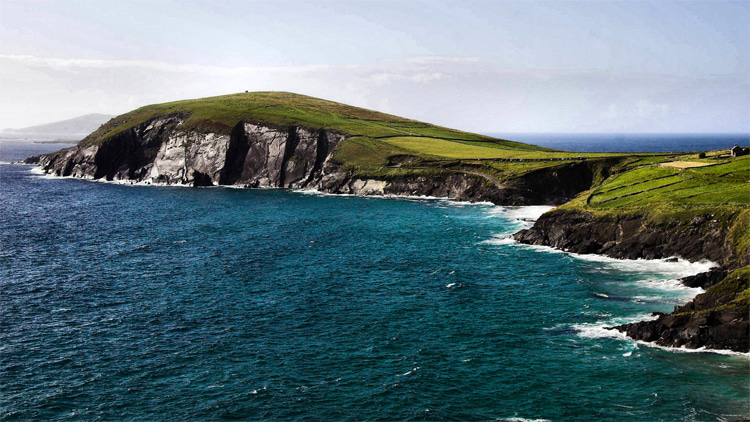
The Atlantic Ocean is the world's second-largest ocean, with 22 percent of the global sea area, increasing to 29 percent when the neighboring seas are included.
Bisected by the Equator, the greatest distance from east to west in the North Atlantic is 6,900 kilometers from Morocco to Florida and 6,500 kilometers from Cape Horn to Cape of Good Hope in the South Atlantic.
The average depth is 3,660 meters, and the deepest point is located in the Puerto Rico Trench at 8,648 meters.
The North Atlantic is the windiest and roughest ocean, with strong winter westerlies of over 55 kilometers per hour, generating a band of seas greater than 15 feet (4.5 meters) in the 30º to 60º zone and sending the biggest waves to the eastern shore of the basin.
There is a significant seasonal variation, with much weaker winds and swells occurring in summer.
The NE trade winds blowing from the sub-tropical highs around 30ºN towards the Equator are sustained throughout the year but weaker than those in the North Pacific.
An extensive area of light winds or doldrums dominates the equatorial regions apart from a weak SW monsoon experienced in the Gulf of Guinea around July.
The South Atlantic is the smallest ocean and is unusual because it completely lacks tropical storm activity.
The barrier provided by the Andes produces a slight reduction of strength in the SE trade winds and a marked reduction of waves in the southwest throughout the year.
Overall, the Atlantic trades are the weakest of all oceans.
3. The Indian Ocean | 70,560,000 square kilometers
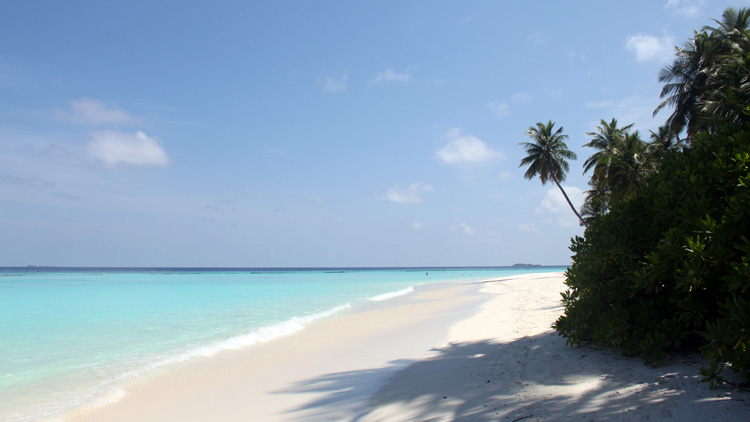
The Indian Ocean occupies 20 percent of the global sea area and is quite similar in size to the Atlantic.
It is located in the Southern Hemisphere, with little area located north of the Equator. It is 6,400 kilometers wide at the Equator.
The average depth is 3,897 meters, with the Java Trench bottoming out at 7,725 meters.
The low latitude of the westerly flow can clash with the icy polar easterlies, creating unpredictable and gusty winds.
These winds have the greatest fetch of anywhere on the planet, leading to the term the "Roaring Forties," which produce large ocean swells, resulting in regular "fully arisen seas."
Peak mean waves of over 15 feet (4.5 meters) are observed in July/August, and unlike in the Northern Hemisphere, the seasonal change is minimal.
The Asian/Australasian monsoon dominates the eastern half of the Indian Ocean throughout summer (Dec-March), when strong NW winds blow throughout Indonesia and northern Australia, while NE winds flow towards India.
In the western half of the Indian Ocean, the winter (July) SW monsoon reaches its greatest intensity around Somalia (Somalia Jet).
The remainder of the sub-tropical-to-equatorial zone is mostly influenced by SE trades.
4. The Southern Ocean | 21,960,000 square kilometers
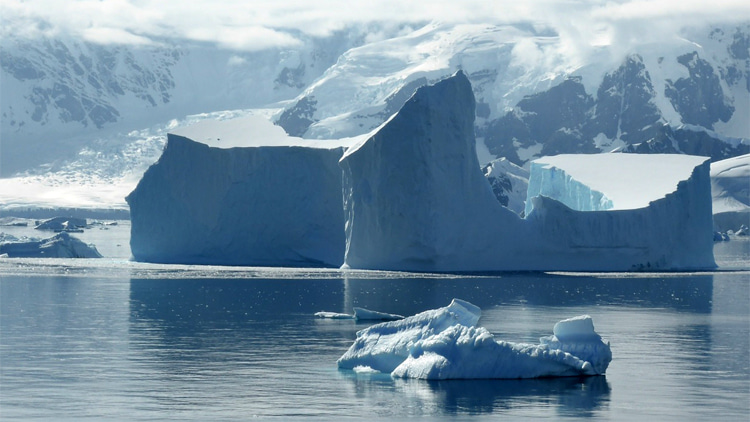
The Southern Ocean, also known as the Antarctic Ocean, is the body of water that surrounds Antarctica.
It is the fourth-largest ocean in the world after the Pacific, Atlantic, and Indian Oceans. It is also the newest ocean, having been recognized as a distinct body of water in the 2000s.
The Southern Ocean is unique because it encircles Antarctica, and the strong winds that blow around the continent create currents that flow clockwise.
These currents, along with the ocean's cold temperatures, help keep the water cold and give it its distinctive blue color.
The Antarctic Circumpolar Current (ACC) is the strongest current in the world and flows toward the east.
The Southern Ocean is also home to many types of sea life, including penguins, seals, and whales.
Some of the sea creatures that live in it are found nowhere else.
In addition, many different types of birds, such as albatrosses and petrels, make their home on the islands and coasts surrounding the Southern Ocean.
Despite its remote location and harsh conditions, human activity has impacted it.
Pollution, such as plastic debris and industrial chemicals, has been found in the Southern Ocean, affecting marine life.
Climate change is also affecting it, with melting ice sheets and glaciers that can lead to sea level rise and ocean acidification becoming an increasing source of concern.
It is essential to protect the Southern Ocean, as it plays a critical role in regulating the Earth's climate and supporting unique and diverse marine life.
5. The Arctic Ocean | 15,558,000 square kilometers
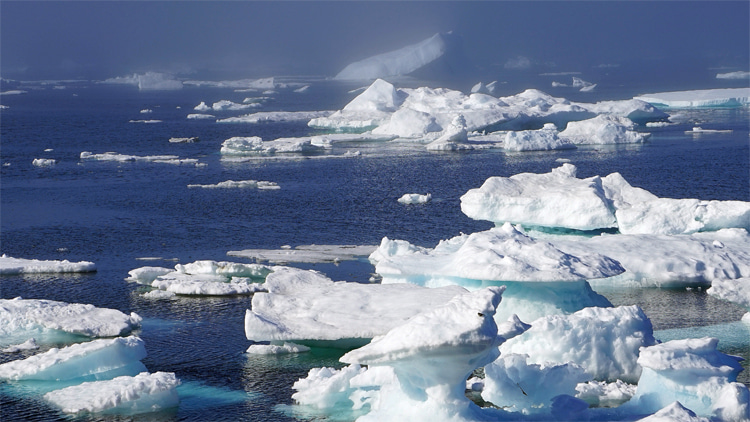
The Arctic Ocean is the smallest and shallowest of the world's five oceans.
It is located in the far north, surrounding the North Pole, and nearly entirely surrounded by Asia, Europe, Greenland, and North America.
It is also known for its cold temperatures and long, dark winters. During winter, it is mostly frozen; during summer, only half of its surface melts.
The Arctic Ocean is home to many different types of sea life, including fish, seals, and whales.
Some of the most well-known animals living in the Arctic Ocean are polar bears, walruses, and narwhals.
Many different types of birds, such as puffins and Arctic terns, also make their home in the Arctic.
There are also many islands in the Arctic Ocean, like Greenland, Svalbard, and the Canadian Archipelago.
These islands are known for their rugged, remote landscapes and are also home to many plants and animals.
It is also important because it has a significant role in regulating the Earth's climate due to the large amount of sea ice that forms in the winter and melts in the summer.
The melting of sea ice impacts the Arctic ecosystem and wildlife that depend on it. Climate change is causing the sea ice to melt at an alarming rate.
The Arctic Ocean gets plenty of fresh water from the large Siberian rivers and warm salt water from the Atlantic Ocean (80 percent) and Pacific Ocean (20 percent).
The icebergs that break away from Greenland represent two percent of the water that comes out from the Arctic Ocean.
Several surface currents and winds are moving around in the area.
The Arctic and the Atlantic oceans are connected by the Northwest Passage, a challenging sailing route.
Humans also impact the Arctic Ocean with oil and gas extraction, overfishing, pollution, and shipping.
The Arctic is also a location of interest for shipping lanes and mineral resources.
So, we need to understand and protect the Arctic Ocean, not just for the sea creatures that live there but also for the entire Earth's climate.
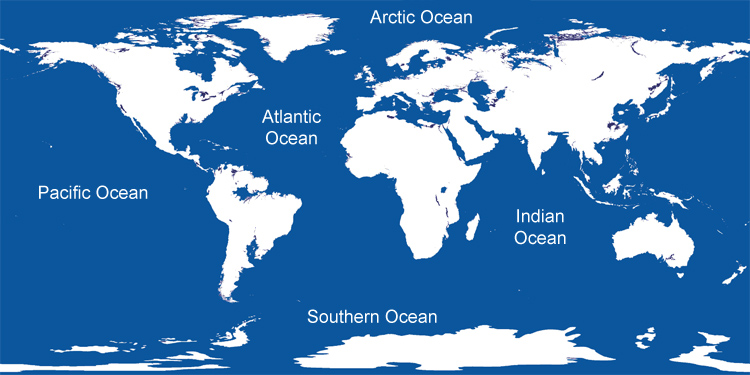
Seas of the World
People often use the word "sea" to refer to the "ocean," but technically, both expressions are not interchangeable.
An ocean has many seas. Seas are smaller parts of an ocean. So, what are the seas of the world?
- Pacific Ocean: Bali Sea, Bering Sea, Bering Strait, Coral Sea, East China Sea, Gulf of Alaska, Gulf of Tonkin, Philippine Sea, Sea of Japan, Sea of Okhotsk, South China Sea, and the Tasman Sea;
- Atlantic Ocean: Baltic Sea, Black Sea, Caribbean Sea, Davis Strait, Denmark Strait, part of the Drake Passage, Gulf of Mexico, Labrador Sea, Mediterranean Sea, North Sea, Norwegian Sea, and almost all of the Scotia Sea;
- Indian Ocean: Andaman Sea, Arabian Sea, Bay of Bengal, Flores Sea, Great Australian Bight, Gulf of Aden, Gulf of Oman, Java Sea, Mozambique Channel, Persian Gulf, Red Sea, Savu Sea, Strait of Malacca, and the Timor Sea;
- Southern Ocean: Amundsen Sea, Bellingshausen Sea, part of the Drake Passage, Ross Sea, a small part of the Scotia Sea, and the Weddell Sea;
- Arctic Ocean: Baffin Bay, Barents Sea, Beaufort Sea, Chukchi Sea, East Siberian Sea, Greenland Sea, Hudson Bay, Hudson Strait, Kara Sea, Laptev Sea, and Northwest Passage;
Discover several things you didn't know about the oceans.
